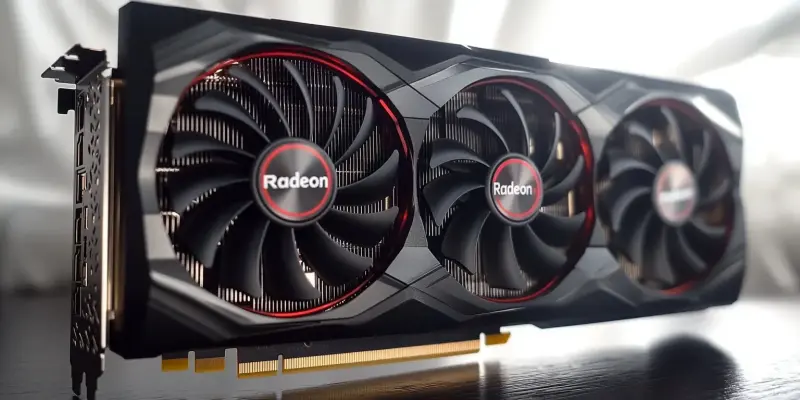In the ever-evolving world of graphics technology, AMD is set to make significant strides with the anticipated release of the Radeon RX 9070 XT GPU. The excitement surrounding its arrival stems from early leaks and rumors that paint an intriguing picture of what this new addition to the RDNA 4 lineup might offer. The RX 9070 XT is set to launch next year, promising impressive specifications that include a boost clock of up to 3.1 GHz and a Total Board Power (TBP) ranging between 260W for the reference model and potentially up to 330W for custom versions. Its base clock is estimated to be around 2.8 GHz, giving it a solid foundation for high performance.
A noteworthy aspect of these early details is the RX 9070 XT’s performance potential, which is purported to rival Nvidia’s RTX 4080. According to a leak on the Chiphell forum by a user named Zhangzhonghao, the Radeon RX 9070 XT could perform within 5 percent of the RTX 4080’s capacity in certain gaming scenarios. Further adding to the intrigue, a 3DMark Time Spy benchmark leak hints that the RX 9070 XT may outpace the RX 7900 GRE by approximately 2 percent, though it appears significantly slower than the RX 7900 XT. While these benchmarks provide a glimpse into the new GPU’s potential, it’s important to approach them cautiously, as synthetic benchmarks don’t always reflect real-world performance.
Competitive Positioning and Product Strategy
Another interesting development is AMD’s decision to abandon the Radeon RX 8000 naming convention for the RDNA 4 series, instead opting for the Radeon RX 9000 series. This shift could indicate a redefined product strategy, possibly aimed at differentiating the new lineup from its predecessors and better positioning the brand in the competitive landscape. The RX 9070 XT is expected to be the flagship model of the RDNA 4 series, but rather than going head-to-head with Nvidia’s high-end RTX 5090, it will likely compete against the mid-range offerings in the Nvidia RTX 5000 series.
This strategic move suggests that AMD is targeting a broader audience with the Radeon RX 9000 series, potentially appealing to both high-end gamers and mainstream users looking for powerful graphics capabilities. It’s a move that could help AMD capture a larger share of the market by offering a compelling alternative to Nvidia’s mid-range GPUs. However, the exact positioning and target audience of the RX 9070 XT will become clearer once more detailed specifications and official benchmarks are released.
Final Thoughts and Future Expectations
In the rapidly advancing field of graphics technology, AMD is gearing up to make a big impact with the upcoming launch of the Radeon RX 9070 XT GPU. The buzz around this new addition to the RDNA 4 lineup is fueled by early leaks and rumors, hinting at impressive features. Set to release next year, the RX 9070 XT boasts a boost clock of up to 3.1 GHz and a Total Board Power (TBP) that ranges from 260W for the reference model to possibly 330W for custom versions. Its base clock is expected to be around 2.8 GHz, ensuring strong performance.
A particularly interesting aspect is its potential to compete with Nvidia’s RTX 4080. According to a leak on the Chiphell forum by a user named Zhangzhonghao, the RX 9070 XT might perform within 5 percent of the RTX 4080 in certain gaming scenarios. Additionally, a 3DMark Time Spy benchmark leak suggests that the RX 9070 XT could outperform the RX 7900 GRE by about 2 percent, although it appears significantly slower than the RX 7900 XT. While these benchmarks offer glimpses of the GPU’s potential, it’s crucial to view them with caution, as synthetic benchmarks don’t always reflect real-world performance accurately.

